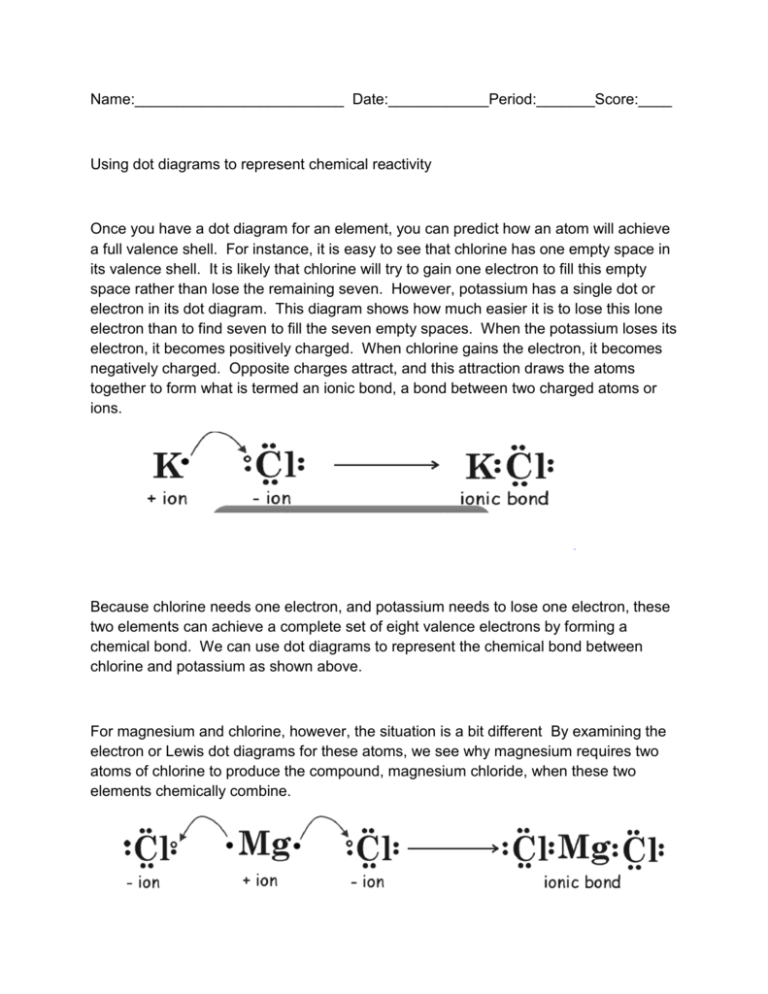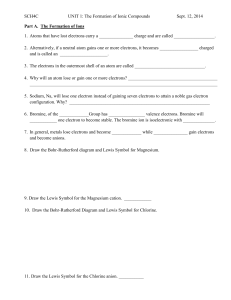Using Lewis Dot Diagrams to represent Chemical
advertisement

Name:_________________________ Date:____________Period:_______Score:____ Using dot diagrams to represent chemical reactivity Once you have a dot diagram for an element, you can predict how an atom will achieve a full valence shell. For instance, it is easy to see that chlorine has one empty space in its valence shell. It is likely that chlorine will try to gain one electron to fill this empty space rather than lose the remaining seven. However, potassium has a single dot or electron in its dot diagram. This diagram shows how much easier it is to lose this lone electron than to find seven to fill the seven empty spaces. When the potassium loses its electron, it becomes positively charged. When chlorine gains the electron, it becomes negatively charged. Opposite charges attract, and this attraction draws the atoms together to form what is termed an ionic bond, a bond between two charged atoms or ions. Because chlorine needs one electron, and potassium needs to lose one electron, these two elements can achieve a complete set of eight valence electrons by forming a chemical bond. We can use dot diagrams to represent the chemical bond between chlorine and potassium as shown above. For magnesium and chlorine, however, the situation is a bit different By examining the electron or Lewis dot diagrams for these atoms, we see why magnesium requires two atoms of chlorine to produce the compound, magnesium chloride, when these two elements chemically combine. Magnesium can easily donate one of its valence electrons to the chlorine to fill chlorine’s valence shell, but this still leaves magnesium unstable; it still has one lone electron in its valence shell However, if it donates that electron to another chlorine atom, the second chlorine atom has a full shell, and now so does the magnesium. The chemical formula for potassium chloride is KCL. This means that one unit of the compound is made of one potassium atom and one chlorine atoms. The formula for magnesium chloride is MgCl2. This means that one unit of the compound is made of one magnesium atom and two chlorine atoms. Practice Now try using dot diagrams to predict chemical formulas. Fill in the table below: ELEMENTS Na and F Mg and O Ca and Cl Li and F K and Cl DOT DIAGRAM FOR EACH ELEMENT DOT DIAGRAM FOR COMPOUND FORMED CHEMICAL FORMULA






